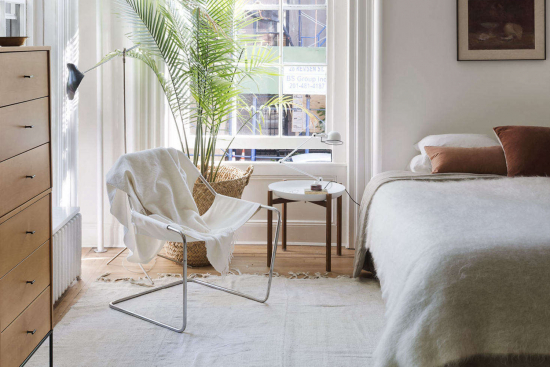“A Hypnotic Optical Effect”: Two Spanish Architects Pattern a 1946 Fisherman’s House in Marine-Blue-and-White Checks
Currently surfacing all over, the checkerboard is the motif of the moment: see Trend Alert and Checks, Please. We’ve been admiring the many ways the design classic is being put to fresh use. Case in point: this 1946 fisherman’s dwelling in Valencia, Spain, originally occupied by the current owner’s grandparents. Tasked with reviving the humble two-story house, architects María Daroz and David Puerta of Viruta Lab lovingly restored the soul of the place while lending it coherency and punch via a marine-blue-and-white tiled thruway from entryway to inner sanctum.
Daroz and Puerta explain that they set out to “preserve the memories embedded within the spaces for the third generation to enjoy,” while also applying “traditional materials used since the 1920s to give the entire space a new look inspired by sea and salt.” It adds up to a whole of lot of repeating checks—and we love the effect. See what you think.
Photography by David Zarzoso, courtesy of Viruta Lab (@virutalab).

“The house is a family legacy and the image the owners have of it is very deep,” they continue, “so it was necessary for any intervention to be as respectful as possible and in a language they understood and took as their own.”










